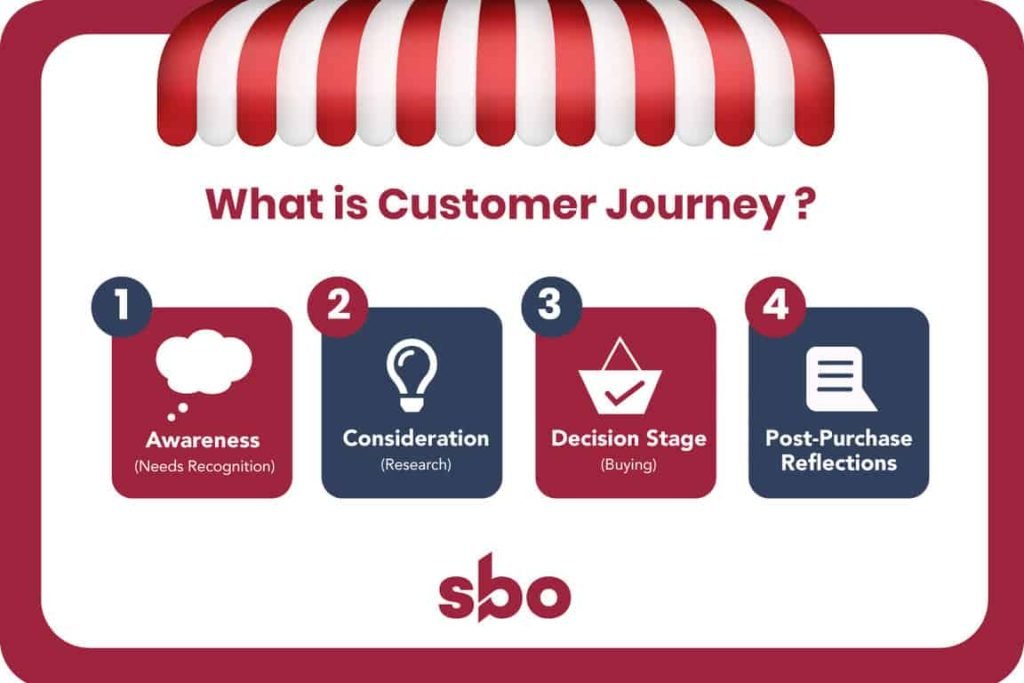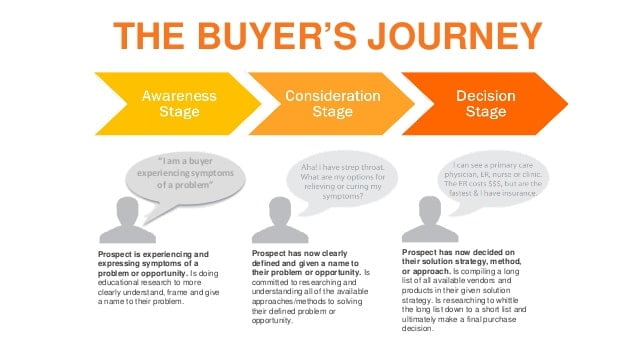Customer Journey Explained: A 5 Mins Guide
The customer journey simply means the whole process and experience of buying a product or service.

As specialists in SEO and Inbound Marketing, it is important to know the basic principles of the customer journey.
The customer journey simply means the whole process and experience of buying a product or service.
(some other commonly used terminologies of the customer journey are the buyer’s journey and consumer journey)

Understanding this process of decision making, understanding the underlying reasons why people buy stuff can be extremely useful in branding, marketing, and business.
In fact, this could even cause you to reconsider your own buying decisions in daily life!
Let simplify this through the example of me buying aesthetic services.
Customer Journey Stage 1: Awareness (Needs Recognition)
The first stage of the whole journey is the awareness phase, where the prospective buyer is made aware of the need to buy a product or service.
Needs can be internal or external.
Internal needs are basic ones such as food, rest, or shelter. External needs are influenced by the environment and society at large.
This is usually done in the form of advertising, which tries to convince people they need something to fulfill a desire they never knew they had.
I became aware that I have facial issues
For example, I never saw a need for me to visit an aesthetic doctor.
Until I read an article about seborrheic keratosis.
I started to be aware that I have a facial issue and that can be solved by professional medical aesthetic services.
After gaining this awareness, I moved to the consideration phase where I start to explore various alternatives to solve my facial issue.

This is a good example of exploiting the awareness phase that will educate the audience and compel them to take further action.
Successful marketing leads buyers into the next phase, which is the consideration phase, while unsuccessful marketing simply causes a lack of tangible action from the buyer.
This stage is crucial, as it initiates the entire buying process in the first place.
Customer Journey Stage 2: Consideration (Research)
In this stage, the buyer has recognized a need but is in the process of pinpointing and researching available methods at their disposal to solve that need.
This stage is characterized by research and information gathering.
In this phase, the human mind will weigh up the list of factors that are relevant to the item/service and conduct research on suitability.
Technical information about the product or service will be scrutinized by curious buyers as they look for the right option for them.
This is usually where SEO comes in, as buyers who know what they want will go online and search for those keywords, and the top searches will yield higher returns.
I am exploring various treatment alternatives
At this point, I have acknowledged that I have a facial issue that I want to solve but I have not decided on the way to solve it.
To solve my facial issue, I still have other options for opting for home remedies and non-medical aesthetic facial salons.
During this phase, I will be doing up researches to find out what is the best solution for my issue.
I can be looking at reviews, blogs, videos, whitepapers, etc that reinforce the decision I will make.
Customer Journey Stage 3: Decision Stage (Buying)
At this stage which is known as the evaluation phase; the buyer has decided on the type of solution for his needs. He will weigh the different options of various providers providing the same solution.
Advertisers often use different emotional or technical means to convince customers that their product is better than the competition.
Common examples include the use of brand reputation, the bandwagon effect, celebrity endorsement, and emotional appeals.
Either way, differing reviews can be made between competing products, which is why good content tailored for the consideration phase is detailed, informative and allows the reader to feel like they came to the conclusion themselves despite the fact that it was already engineered from the very start.
It is important to note that this phase is as dependent on the individual’s industriousness and curiosity as it is on good marketing, as a lazier consumer could just click on the first option he/she sees, while a hardworking buyer may consider visiting dedicated forums or blog sites to meticulously compare products.
The final stage is the most straightforward.
Once a decision has been made, the buyer can purchase the product.
In this stage, only extreme circumstances can alter the buyer’s destiny – either a financial disruption or persuasion by a close external entity (friend, family).
I am choosing an aesthetic doctor suitable for me
For instance, after doing research, I have decided that medical aesthetic treatment is for me. And now I need to look for the best aesthetic doctor suitable for me.
I will be looking at cost, review, comfortability of the provider to make a decision.

Customer Journey Stage 4: Post-Purchase Reflections
After the purchase, customers can express satisfaction or dissatisfaction which will affect ideas such as brand loyalty and feedback, which can be in the form of reviews.
At a certain time period, after I completed my aesthetic treatment, I will make a logical and emotional reflection about my buying decision. This is important for me to decide if I should leave a review or make a recommendation to my friends.
Understanding Customer Journey is the key to SEO success
Now that you know about the stages in a purchase, you can use that knowledge to improve your market and boost SEO rankings by improving the way you target audiences and the buying experience you designed for each group.
Explore More Content
Table of Content

